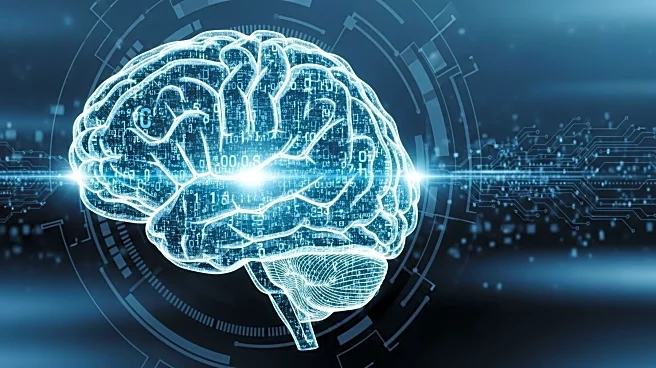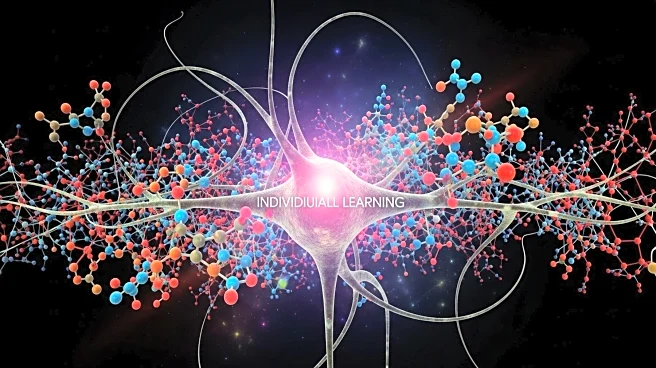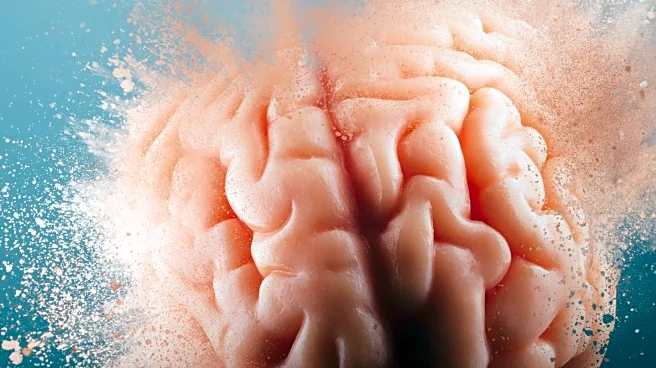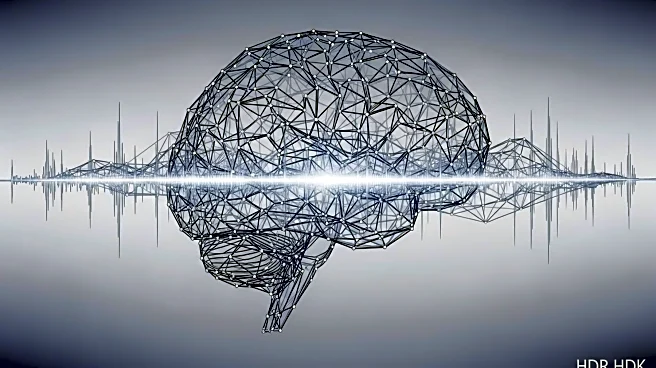What is the story about?
What's Happening?
A recent study published in Advanced Science has demonstrated how simple rhythmic sounds can significantly alter the brain's network landscape. Researchers introduced a new analytical tool called FREQ-NESS to map brain networks operating across different frequencies. The study found that listening to rhythmic tones engages the auditory cortex and reorganizes the brain's broader network configuration, enhancing communication between slower and faster brain rhythms. This research provides insights into how the brain processes external stimuli like music or speech, highlighting the dynamic nature of brain networks and their ability to adapt to auditory inputs.
Why It's Important?
The findings of this study have important implications for understanding cognitive neuroscience and the brain's response to auditory stimuli. By revealing how rhythmic sounds can reconfigure brain networks, the research offers potential applications in areas such as music therapy, cognitive rehabilitation, and the development of auditory-based interventions for neurological disorders. The ability to map frequency-specific brain networks provides a deeper understanding of brain dynamics, which could lead to more effective treatments for conditions that affect cognitive and sensory processing. This study underscores the complexity of brain functions and the potential for innovative approaches to enhance brain health.
What's Next?
Future research may focus on expanding the FREQ-NESS method to support multimodal applications and explore its use in different experimental conditions and populations. Researchers are interested in applying this analytical tool to study changes in brain network landscapes during states of consciousness, psychedelic intake, aging, and in musicians. The development of a broadband variant of the method is already underway, which could further enhance the ability to analyze brain networks across a wider range of frequencies. Collaboration with other research centers may also lead to new insights into how brain rhythms shape perception and action.
AI Generated Content
Do you find this article useful?














